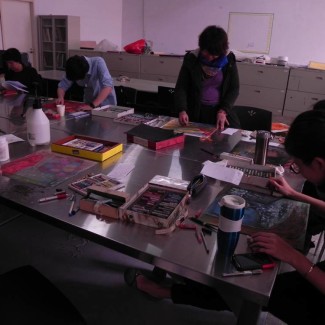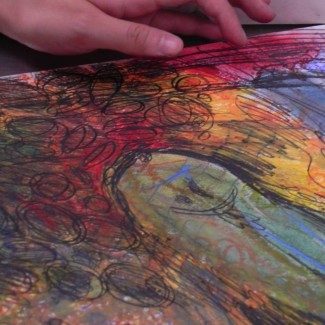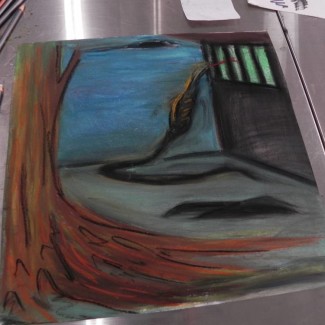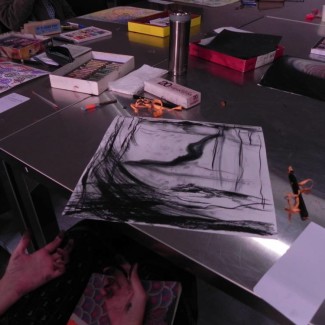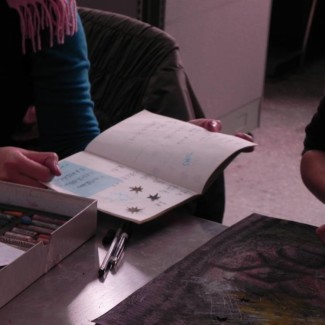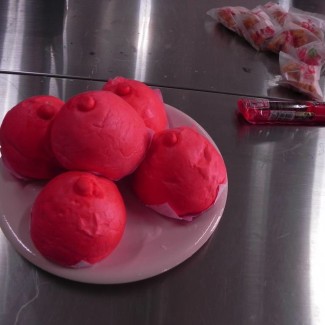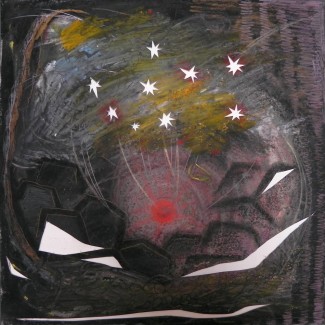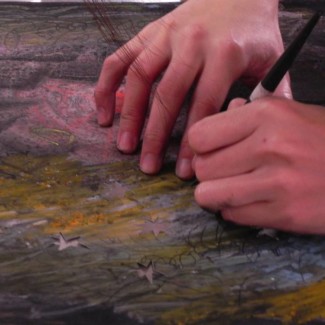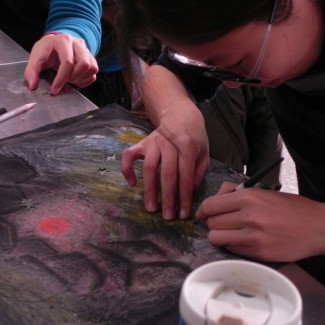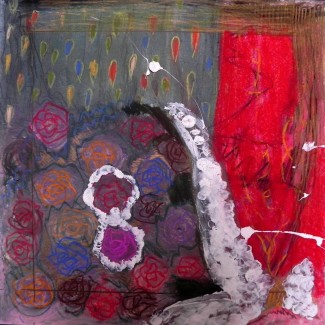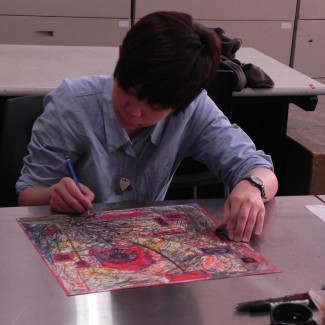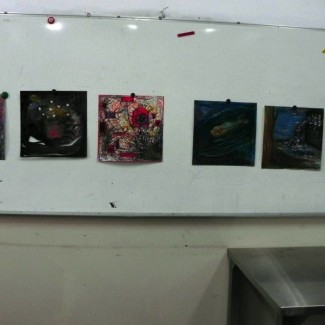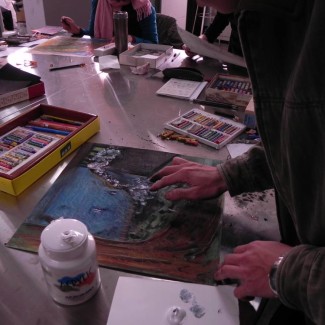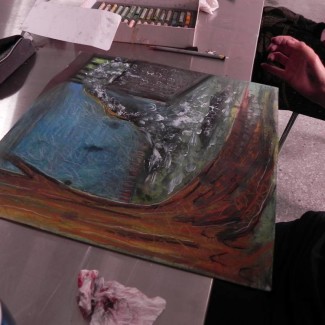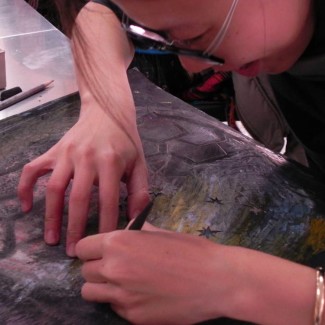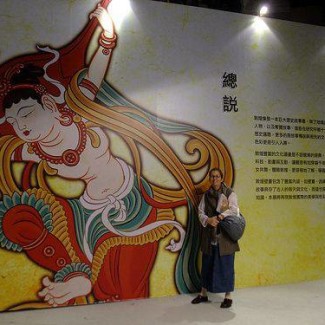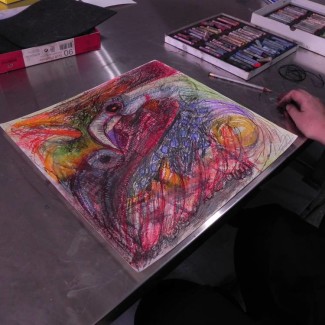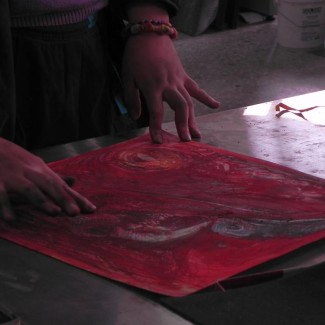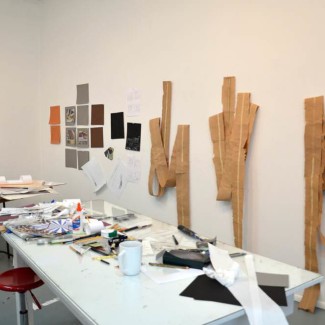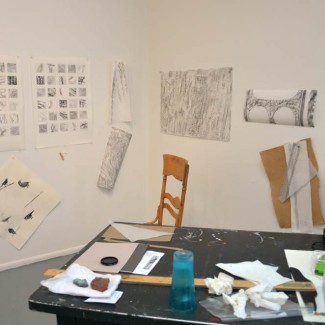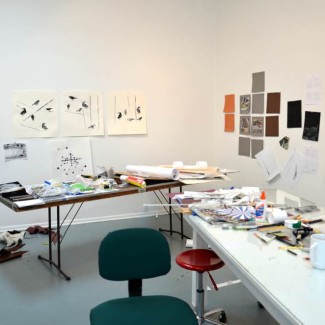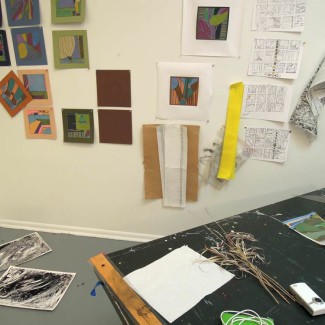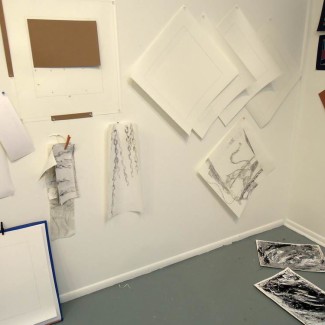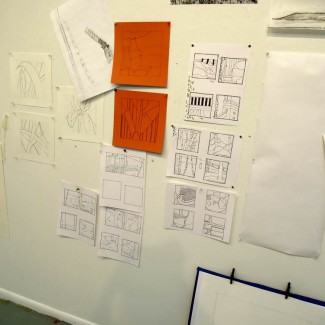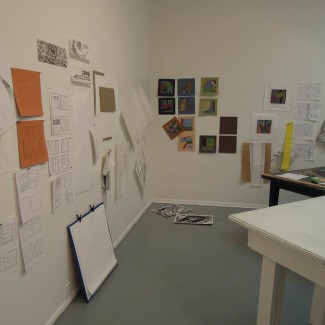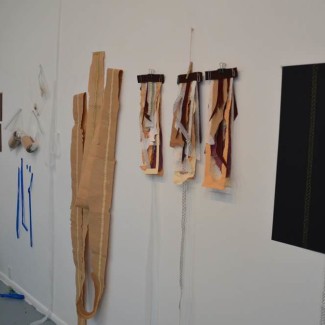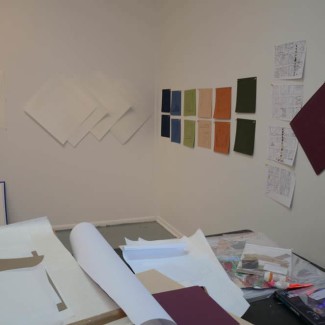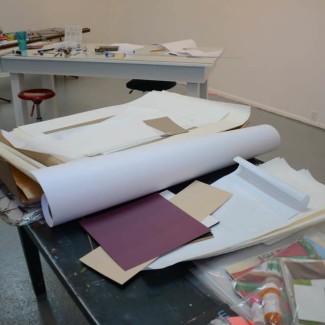The Interface: Culture, New Media, & Pedagogy
Today digital visual experiences are inherently embedded in our physical environment, invisibly integrated into our everyday tasks, and increasingly mobile and interactive within our culture. My research investigates key trends emerging for a view of teaching, learning and creative inquiry. Pedagogy in higher education will reflect the pervasive impact of technology, access to content, and the transformation social media is having on all aspects of education. At one end of the spectrum models espouse competition for resources; while the other end models collaboration and open access across resources.
A Cultural Interface: New Media Research in Art Education.
Abstract: This article describes how Participatory Action Research (PAR) was introduced and implemented in a qualitative study in three public high-school art education classes. This study shows that PAR can be used to encourage a ‘voice’ in defining knowledge, coalescence and convergence of practical and theory issues an art education by being responsive to experience-based questions of interest to the practice-based discipline of teaching art. The questions of interest in this study focus on the critical explorations of the cultural contexts of teachers’ and students’ lived experiences in relation to art and new media. I must try… to have the people dialogically involved as … researchers with me… This method of investigation which involves study—and criticism of the study—by people is at the same time a learning process. Through this process of investigation, examination, criticism and reinvestigation, the level of critical thinking is raised among all those involved. (Freire, 1988 p. 292) Tillander, M. (2014). Chapter 37: A Cultural Interface: New Media Research in Art Education. In M. Buffington and S. Wilson McKay (Eds.) Practice Theory: Seeing the Power of Art Teacher Researchers. (272-280), Reston, VA: National Art Education Association (NAEA).
Integrating Studio and Design Practice in Ubiquitous Learning Environments
Abstract: Ubiquitous technologies, like mobile applications, are reshaping the relationships between content, thinking, and practice. The design of an online art education course in the age of ubiquitous, mobile computing has the potential to both empower students as individual learners and as members of an online community. Design and art thinking for an online educational environment is a creative thinking-in-action method that uses mind, action, and world, and embraces the technologies, humanities, and design. An effective pedagogical model enables students to apply their unique knowledge and culture into the learning process and into practice in local and global communities. This research illustrates my process of incorporating the culture of studio and design practice into the creation of courses for an online MA in art education program. This process recognizes both the unique characteristics of “art” as a discipline (combining creativity and an ill-structured knowledge domain), with a reflection on design principles and practice to incorporate various modalities of knowledge and learning.
Tillander, M. (in press/2014) Integrating Studio and Design Practice in Ubiquitous Learning Environments. Ubiquitous Learning: An International Journal
If Collaboration is the Answer: What Are The Questions?
Abstract: The interconnectedness of educational and social systems is being driven by the rapid pace of technological change and increased complexity. This paper focuses on art and art education regarding contemporary collaborative and collective practices. These insights begin a dialogue to re-imagine collaborative learning in art education for the 21st century. I provide practical tips for implementing, monitoring, and evaluating collaborative projects that promote collective agency and responsibility in the learning process.
Tillander, M. (forthcoming/2014). If Collaboration is the Answer: What Are The Questions? FATE in Review, 35, p. #
Untethered and Viral: Social Media as Poetic World-Making (NAEF GRANT/March 2014 decision)
Abstract: This research proposes to explore the interaction of social media and artistic expression in educational practice. By focusing on the inherent shift of social media from content to performance (i.e., often referred to as transversal learning ), this proposal examines how the stages of learning and art teaching practices (e.g., entry, adoption, adaption, appropriation, and innovation) are shaped by this shift. The research will engage eight 6-12th grade art educators and two of their students in a project involving a social form of poetic-world-making and the unique expression found in online ecologies. In the twenty-first century, it is important to constantly challenge and re-define what we mean by visual art, to re-survey the landscape for new spaces and places of art making and learning and to creatively and critically engage the increasing convergence between visual art and new media. The overarching goal is to identify a set of best practices for integrating social media in art education; where social media resonates through art practice and pedagogy.
Untethered and Viral: Social Media as Poetic World-Making, NAEF Research Grant, National Art Education Association (NAEA), ($10,000/March 2014 decision).
Collaborative practice and ubiquitous learning: Online agency in art education (SEF 2013)
Abstract: The goal of this project is to expand my art educational knowledge and apply these new strategies in an international project. I would subsequently integrate these experiences into University of Florida’s (UF) graduate art education program by redefining the online boundaries of art education and technology. A key aspect of refining the program is to develop strategies that account for the complexity of multiple ecologies (i.e., local and global communities) and the growing requirement to dynamically transition within each concurrently—a critical skill for the 21st century. The project is significant in that the research offers innovative opportunities to engage and reflect on the neutrality of 21st century ubiquitous learning through art educational projects with an international community. The focus will be on how to a) integrate technology content in local art learning through the fusion of a collaborative cultural practices and new media technologies; b) support art educators with strategies for innovatively engaging a synergy between ubiquitous technology, knowledge processing and creation; c) challenge assumptions about technology, then refocus the development of innovative art and technology curricula; and d) respond to the increasing demand for collaborative and international scholarship. In the second year (2014), I will travel to Taiwan to engage in collaboration projects, participate in research forums, and serve as liaison with faculty and educational institutions in Taiwan. Throughout this process I will use fieldwork and cultivate skills in collaborative ethnography as the research methods to collect, analyze, and interpret the process involved in collaborative inquiry and learning. Collaborative ethnography will be used to extract cultural descriptions, interpretations, and representations of the material and collaborative processes of the project. In this regard, collaboration is defined as a media in which participants contribute to and reflect on reciprocal practices of both the conceptual process and product. Research assistants will participate in various stages of the design evolution, execution, analysis and evaluation of the project.
2013/14 Collaborative Practice and Ubiquitous Learning: Online Agency in Art Education, 2013/14 Scholarship Enhancement Fund, College of Fine Arts, University of Florida. ($6,389)
Written and Visual Dialogues: Meaning Making with Written and Visual Dialogues. (UG Mentoring, Center for Undergraduate Research)
Abstract: Investigating meaning-making, through art is a legitimate inquiry tool with a performative feature for its learners. To be literate in the 21st century requires the individual to mediate between personal experiences, emotions and the realities of self as well as images we engage with in the world. As an academic and a practicing visual artist, I am interested in the role of images in critically shaping how we come to know and understand our world. What I teach to my pre-service visual art teacher educators is now as important to pre-service educators in ARE 4314 Art for Elementary Schools as part of the idea of interdisciplinary education.
This research explores how meaning-making differs across written and visual responses in a university art education classroom. Action research was used to investigate the written and visual responses to eight readings in ARE4243 Principles of Teaching Art. The artifacts from these responses were coded based on the type of meaning-making present. The data was graphed and analyzed. The results and dialogue that emerged in the course of the study suggests that students who align themselves primarily as visual learners will more likely produce more meaningful work in visual responses rather than written.
Offering students research experiences in undergraduate course work is a way that allows students to develop skills in research as part of their academic load. As a practitioner researcher Nicole gained valuable insights about research on teaching and learning, applying research in a particular setting, and gathering data to increase effectiveness as a teacher and for student learning. The collaborative include experiences in everything from IRB protocol submission, gathering data, analyzing evidence and then reporting and presenting the results at the 2013 UF Undergraduate Research Symposium. Collaborative Team: Michelle Tillander and Nicole Giovagnoli
2013 Written and Visual Dialogues: Meaning Making with Written and Visual Dialogues. UG Mentor Research Fall 2013: Nicole Giovagnoli, UF Teach Research Methods, Center for Undergraduate Research
Taiwan Collaborative Conversations 2011
Abstract: Every classroom should be a community of learners whereby students gain competence, autonomy, and connections to others in support of their learning. While working in groups can inspire learning, the benefits often fall short when too much time is spent in groups. (Springer, Stanne, and Donovan, 1999 )Used properly, collaboration and collective learning can build communities of learners in which students 1) can confront the application of new knowledge through interdisciplinary learning, 2) can advance the relationship they have among themselves and others, and 3) can connect learning to their personal, social, and work lives.
“What the child is able to do in collaboration today he will be able to do independently tomorrow.”(Vygotsky, 1978, p. 211)
Lev Vygotsky(1978) acknowledged that conversations become internalized as thought and extend individualized learning. These conversations reinforces the notion that social construction of knowledge through collaboration is essential for learning. Philosopher Jacques Rancière(2007) stated that the “main enemy of artistic creativity as well as of political creativity is consensus—that is, inscription within given roles, possibilities, and competences.” (p. 257) He challenged us to engage in emancipatory, transformational, and subjective practices. In art, different and often opposing elements converge and shape something new from their interaction. Art education therefore provides a robust space to explore collaborative and collective learning without succumbing to consensus. (Tillander, 2014, FATE in Review).
In my travel to Taiwan in 2011, began with and invitation to work with Graduate Fine Art students form Taiwan Municipal University to considered how contemporary issues, research theories, and technologies call into question established methods of research and teaching in art and art education. I presented graduate research projects from the University of Florida School of Art and Art History and did a full day workshop on developing research topics and questions. Student visualized and mapped their research ideas and then dialogued about their research directions.
In addition, I worked of a group of MFA students from Dr. Chen’s painting seminar for 3 weeks. The MFA students were very interested in a western perspective and practicing their English. Each student presented their work and I asked questions and commented on the technical and conceptual development of their studio research focus. Since we finished seeing all 8 students’ artworks, I asked if we could would together on a project for the last class. We all agreed to collaborate on making art together. The experience was very exciting even though we were very apprehensive initial as to what would transpire. Student enjoyed the process and results so much that they spoke about submitting the work for and exhibition and working together again on a single large artwork. The commingling of our ideas, process and techniques afford an opportunity to reconsider how we learn and know. Students commented that after working with their colleagues they had new knowledge about their art practice and that of their peers.
Collaborative Team: Michelle Tillander and Dr. Tina Chen
Blurring the Boundary Between Online and Offline Communication (Jentel Residency Grant)
Abstract: The proposed project would build upon and extend the collaborative working artistic processes of Iterative Convergence an interactive installation. The creative collaborative process for us is a unique relational exchange of transcultural/diverse/cross cultural knowledge, skills, and aesthetics that interrupts and interfaces difference, location, and boundaries of our artistic practice. The artistic collaboration of this joint residency becomes a collective for us to confront/provoke the singular dimension of personal artistic identity, ideas, techniques, and philosophies whose sustainability is being challenged in the 21st century. The series Skyspace (Woo, 2010) presents issues of locational identity and cultural displacement heavily influenced by today’s digital nomadic lifestyle. Shifts in geographies, emotional, cultural, and educational experiences influence our identity reformation. The scanned black and white fingerprints are transformed into the scenes of sky and land with photo realistically painted international airplanes rendered into the digital pigment prints. 4” Binding Unbound (Tillander, et. all, 2004) is a collaborative project that explores visually how we come to know, how we represent knowledge and inquiry, and explores how knowledge is often missing in culturally shaped spaces. The work is a collaborative, interactive, and intervisual dialogue that challenges the constructs of the bound book by exploring the book as a form of knowledge and creating personal response pages as well as inviting modifications to existing pages. The virtual site is a portal for continual conversations and expands the initial site and form of the art and pedagogy practice to unbind the confines of a singular physical object or space.
2012 Blurring the Boundary Between Online and Offline Communication. Jentel Residency, Jentel Foundation, Banner, WY., 4-week residency ($4,400)
